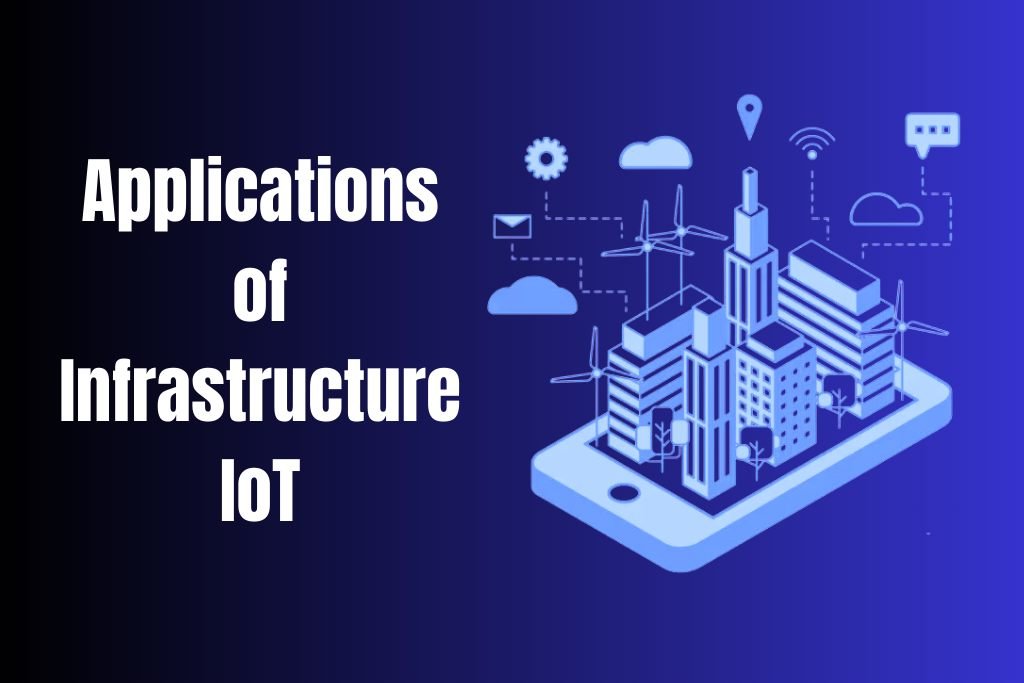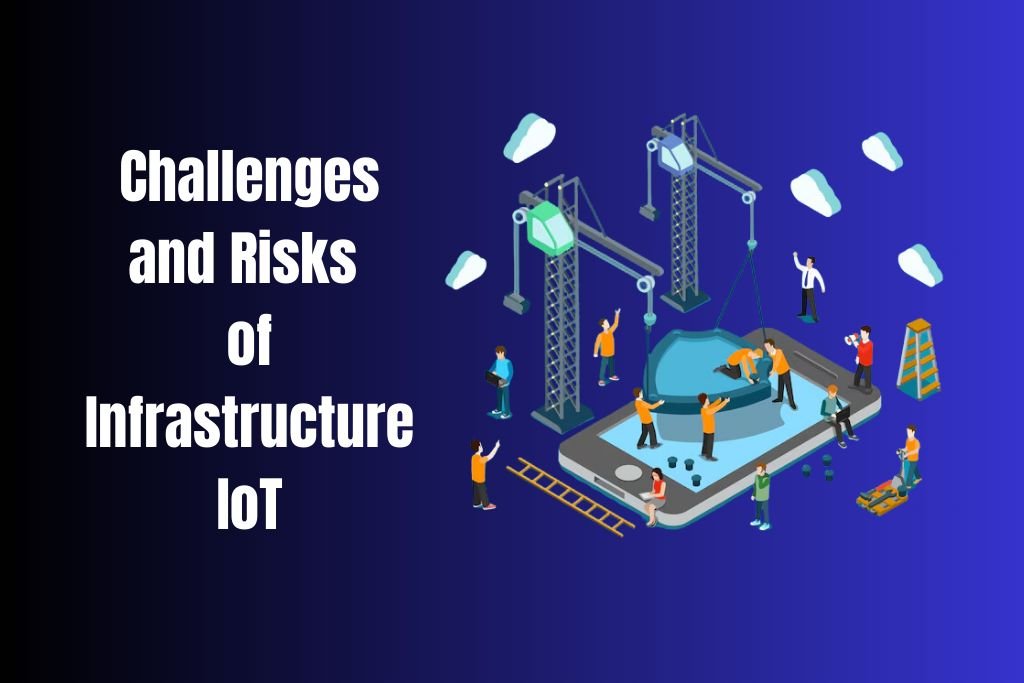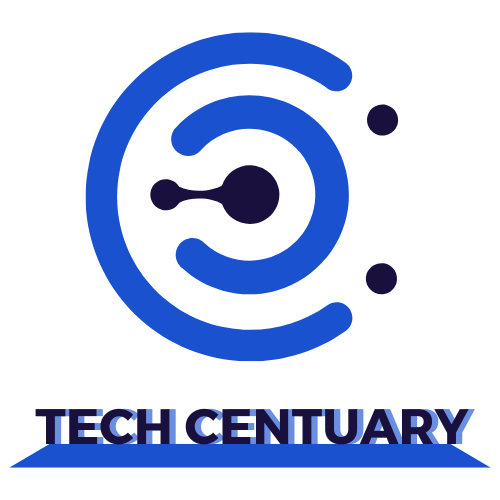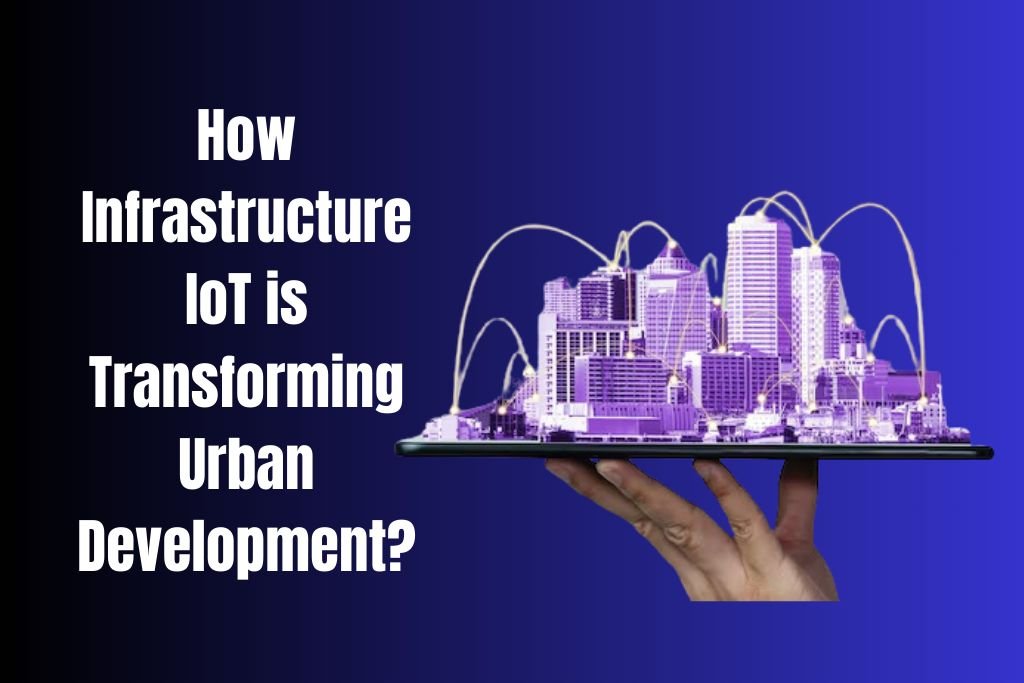Infrastructure IoT refers to the integration of connected devices and systems into urban infrastructure to enhance efficiency, sustainability, and functionality. By utilizing technologies like sensors, connectivity networks, and data analytics, Infrastructure IoT enables real-time monitoring, automation, and optimization of essential urban systems such as traffic, energy, water, and public safety.
As cities face challenges like population growth, resource scarcity, and environmental concerns, IoT is emerging as a transformative solution. From smart traffic lights that reduce congestion to IoT-powered grids that optimize energy use, Infrastructure IoT is reshaping how cities operate. This article explores the workings, applications, benefits, and challenges of Infrastructure IoT while highlighting the technologies and trends shaping its future.
Table of Contents
What is Infrastructure IoT?
IoT infrastructure encompasses the technologies and systems that enable smart devices and sensors to connect, share, and process data seamlessly.
Key components include:
- Devices and Controllers: Smart devices, such as sensors and processors, designed to meet IoT standards.
- Network: High-bandwidth, low-latency networks that ensure fast and reliable communication.
- Storage: Rapid storage solutions capable of meeting demanding read/write speeds.
- Cloud Infrastructure: Services that facilitate data processing, storage, and device interaction through gateways.
- Security: Robust measures to safeguard operations and data integrity.
- Data Analytics: Tools for delivering real-time insights from collected data.
How Infrastructure IoT Works
Infrastructure IoT operates by connecting devices, sensors, and systems to collect, share, and analyze data in real-time. This interconnected network enhances the efficiency and reliability of urban infrastructure. The functionality of Infrastructure IoT relies on three key components:
- Sensors and Connected Devices
Sensors play a crucial role in monitoring various aspects of urban systems. For instance, environmental sensors track air quality, traffic cameras monitor congestion, and smart meters measure energy usage. These devices continuously collect data, providing a real-time view of urban conditions. - Connectivity Technologies
IoT devices rely on robust communication networks to transmit data. Technologies like Wi-Fi, LoRaWAN, and 5G ensure seamless connectivity across infrastructure systems. For example, 5G’s low latency and high-speed capabilities enable real-time communication between traffic lights, vehicles, and central systems. - Data Processing and Platforms
Once data is collected, it is processed and analyzed to generate actionable insights. This is done through cloud computing platforms or edge computing systems that process data locally for faster responses. Platforms like Azure IoT and AWS IoT support these operations by providing tools for data visualization, automation, and system integration.
For example, in a smart city, IoT-enabled traffic lights use data from sensors to adjust signal timings dynamically, reducing congestion during peak hours. Similarly, smart grids analyze energy consumption patterns to optimize power distribution and reduce wastage.
Applications of Infrastructure IoT
Infrastructure IoT has a wide range of applications that enhance urban functionality and improve quality of life. Below are some key areas where Infrastructure IoT is transforming urban systems:

1. Smart Traffic Management
IoT-enabled traffic systems monitor real-time traffic patterns using cameras and sensors. These systems adjust signal timings to reduce congestion, improve fuel efficiency, and minimize travel time. For instance, smart traffic lights in connected cities prioritize emergency vehicles and reroute traffic during peak hours.
2. Energy Management
Smart grids powered by IoT optimize energy distribution by analyzing demand and adjusting supply dynamically. Streetlights equipped with motion sensors conserve energy by dimming during low-traffic hours and brightening when pedestrians or vehicles are detected. These systems reduce energy wastage and operational costs while promoting sustainability.
3. Water Management
IoT applications in water infrastructure include smart meters, leak detection sensors, and water quality monitors. These systems track water consumption, identify leaks in real-time, and ensure safe water distribution. For example, cities can prevent water loss by addressing leaks detected by IoT devices in pipelines.
4. Public Safety and Security
IoT enhances public safety with smart surveillance systems and emergency response technologies. Cameras equipped with AI analyze real-time footage to identify suspicious activities, while IoT-connected alarms and sensors notify authorities during emergencies. In disaster management, IoT systems monitor environmental conditions and provide early warnings.
5. Building and Construction
IoT is used in monitoring the structural integrity of buildings, bridges, and other infrastructure. Sensors embedded in construction sites track vibrations, stress, and temperature to ensure safety during and after construction. These insights enable predictive maintenance and prevent costly repairs.
Benefits of Infrastructure IoT
The adoption of Infrastructure IoT has revolutionized how cities and urban systems operate, delivering numerous benefits that improve efficiency, sustainability, and quality of life. Below are some of the key advantages:
1. Enhanced Resource Efficiency
Infrastructure IoT optimizes resource usage by monitoring consumption patterns and adjusting operations in real-time. For example, smart grids reduce energy waste by balancing supply and demand, while smart water systems minimize water loss through early leak detection.
2. Real-Time Monitoring and Decision-Making
IoT enables real-time data collection and analysis, allowing city authorities to make informed decisions quickly. For instance, traffic management systems can dynamically reroute vehicles to prevent congestion, and environmental sensors provide instant alerts about air quality issues.
3. Cost Savings
By automating operations and enabling predictive maintenance, IoT reduces operational costs. Smart streetlights save electricity costs, and IoT-enabled infrastructure monitoring prevents expensive repairs by addressing issues before they escalate.
4. Improved Urban Mobility
IoT solutions streamline urban mobility by reducing traffic congestion and enhancing public transportation. Real-time data from IoT devices helps commuters plan efficient routes and reduces delays in public transit systems.
5. Sustainability and Environmental Impact
IoT promotes eco-friendly practices by optimizing energy use, reducing emissions, and conserving water. For instance, motion-sensing streetlights lower electricity usage, while smart irrigation systems ensure efficient water management in urban landscapes.
6. Enhanced Public Safety
IoT strengthens public safety by integrating smart surveillance, early warning systems, and emergency response technologies. These solutions help authorities act swiftly during disasters, accidents, or security threats.
Challenges and Risks of Infrastructure IoT
Despite its transformative potential, the adoption of Infrastructure IoT comes with several challenges and risks that must be addressed to ensure successful implementation and operation. Below are the key issues:

1. Security Vulnerabilities
Infrastructure IoT systems are highly interconnected, making them attractive targets for cyberattacks. Unauthorized access to critical systems, such as traffic lights or energy grids, can lead to significant disruptions. Ensuring robust security measures, such as encryption and regular updates, is essential to mitigate these risks.
2. High Implementation Costs
Deploying IoT systems in urban infrastructure requires significant investment in hardware, software, and skilled personnel. Smaller cities may face budget constraints, limiting their ability to adopt comprehensive IoT solutions.
3. Data Privacy Concerns
IoT systems collect vast amounts of data, including sensitive information about citizens and urban activities. Ensuring this data is securely stored and used responsibly is critical to maintaining public trust and compliance with data protection regulations.
4. Interoperability Issues
The lack of standardized protocols across IoT devices and platforms can lead to compatibility problems. Integrating devices from different manufacturers into a cohesive system often requires additional customization, increasing complexity and costs.
5. Dependence on Connectivity
IoT systems rely on stable and fast communication networks. Any disruptions in connectivity can hinder real-time data transmission and compromise the performance of IoT-enabled infrastructure, especially in critical applications like traffic management.
6. Maintenance Challenges
As IoT systems grow more complex, maintaining them becomes increasingly challenging. Regular updates, device replacements, and troubleshooting require significant resources and technical expertise.
Emerging Technologies in Infrastructure IoT
The advancement of technologies in Infrastructure IoT is driving significant improvements in urban systems, enhancing efficiency, and addressing critical challenges. Below are the key technologies reshaping the future of Infrastructure IoT:
1. 5G Connectivity
5G is revolutionizing Infrastructure IoT by enabling faster data transfer, low latency, and reliable communication between IoT devices. This technology supports real-time decision-making, which is crucial for urban applications like traffic management and smart grids.
- Smart Traffic Systems: 5G facilitates instant communication between traffic lights, vehicles, and control systems to optimize traffic flow and reduce congestion.
- Emergency Response: Real-time alerts powered by 5G improve coordination in emergencies, such as accidents or natural disasters.
For example, in smart cities, 5G networks enable IoT sensors to collect and share data instantly, ensuring smooth operations and quick responses to critical events.
2. Artificial Intelligence (AI)
AI enhances IoT systems by providing advanced data analysis, pattern recognition, and automation capabilities. In Infrastructure IoT, AI is instrumental in applications such as intelligent traffic control, predictive maintenance, and optimizing resource usage.
- Predictive Maintenance: AI analyzes data from sensors to predict potential equipment failures, allowing cities to address issues before they escalate.
- Traffic Optimization: AI algorithms process real-time traffic data to adjust signal timings dynamically, improving traffic flow and reducing travel time.
For instance, AI-powered systems in smart grids optimize energy distribution by analyzing consumption patterns, reducing wastage, and ensuring stable supply.
3. Edge Computing
Edge computing processes data closer to its source, reducing reliance on centralized cloud systems. This minimizes latency and enhances the reliability of time-sensitive IoT applications.
Edge computing is particularly valuable in:
- Real-Time Monitoring: Sensors on bridges and buildings detect structural anomalies and send instant alerts to authorities.
- Traffic Management: Localized processing ensures that traffic light adjustments occur without delays, even in high-congestion scenarios.
For example, in smart cities, edge computing enables immediate responses to critical infrastructure needs, such as power outages or security breaches.
4. Digital Twins
Digital twins create virtual models of physical infrastructure, allowing planners and engineers to monitor, simulate, and optimize urban systems without disrupting actual operations.
Key benefits include:
- Urban Planning: Digital twins simulate city expansions, helping planners visualize the impact of new roads, buildings, or utilities.
- Maintenance Planning: Virtual replicas of bridges or water systems highlight areas requiring maintenance, ensuring timely interventions.
For example, a digital twin of a city’s energy network can simulate energy demand during peak hours and optimize grid performance accordingly.
5. Internet of Vehicles (IoV)
IoV extends IoT to vehicles, connecting them with infrastructure systems for smarter urban mobility. This technology enhances traffic flow, reduces emissions, and improves road safety.
Applications of IoV include:
- Vehicle-to-Infrastructure Communication (V2I): Vehicles share data with traffic lights and control centers, enabling optimized signal timings and smoother traffic flow.
- Enhanced Navigation: IoV provides drivers with real-time updates on traffic conditions, accidents, or road closures.
For instance, autonomous vehicles rely on IoV to communicate with city infrastructure, ensuring safe and efficient navigation.
Leading Companies and Platforms in Infrastructure IoT
Several companies and platforms are at the forefront of Infrastructure IoT, driving innovations and offering comprehensive solutions to enhance urban systems. Below are the key players and their contributions:
1. Siemens
Siemens is a global leader in smart infrastructure solutions. Its IoT platform, MindSphere, connects infrastructure systems to collect, process, and analyze data. Siemens specializes in smart grids, traffic management, and building automation, helping cities improve efficiency and sustainability.
2. Cisco
Cisco focuses on IoT connectivity and network solutions for urban infrastructure. Its Cisco Kinetic platform enables secure data transfer and management across IoT devices. Cisco’s solutions are widely used in smart city projects for traffic monitoring, public safety, and energy management.
3. IBM
IBM’s Watson IoT platform combines artificial intelligence with IoT to deliver advanced analytics and automation. IBM is known for its contributions to smart grids, water management, and predictive maintenance of infrastructure systems. Watson IoT helps cities derive actionable insights from vast amounts of data.
4. Honeywell
Honeywell provides IoT-enabled solutions for smart buildings and energy management. Its Honeywell Forge platform focuses on optimizing building operations, reducing energy consumption, and enhancing occupant comfort. Honeywell’s IoT technologies are instrumental in creating sustainable urban environments.
5. General Electric (GE)
GE’s IoT platform, Predix, is designed for industrial and infrastructure applications. It supports energy management, structural monitoring, and predictive maintenance. GE’s solutions help cities ensure the reliability and safety of critical infrastructure systems.
6. Microsoft
Microsoft’s Azure IoT platform offers a range of tools for managing IoT devices, analyzing data, and automating urban operations. Azure IoT is widely used in applications like smart grids, traffic control, and public safety systems. Its integration with AI and edge computing makes it a versatile solution for infrastructure IoT.
7. Amazon Web Services (AWS)
AWS IoT Core provides scalable and secure solutions for connecting and managing IoT devices in urban infrastructure. Its robust cloud computing capabilities support applications such as traffic monitoring, environmental sensing, and smart energy systems.
Future Trends in Infrastructure IoT
Infrastructure IoT is evolving rapidly, driven by technological advancements and the growing need for sustainable urban development. Below are some of the key trends shaping the future of Infrastructure IoT:
1. Widespread Adoption of Smart Cities
Smart city initiatives are expanding globally, with cities integrating IoT technologies to improve urban infrastructure. From traffic management to waste collection, IoT systems will play a crucial role in creating more efficient and livable urban spaces.
2. Green IoT for Sustainability
The focus on sustainability is leading to the development of green IoT solutions. Smart energy systems will optimize resource usage, while IoT-enabled water management will reduce wastage. Motion-activated streetlights and IoT-based renewable energy grids will further contribute to eco-friendly urban systems.
3. Integration with AI and Machine Learning
The future of Infrastructure IoT lies in deeper integration with AI and machine learning. These technologies will enable predictive analytics, smarter automation, and real-time decision-making. For example, AI-powered traffic systems will optimize routes dynamically to reduce congestion and emissions.
4. Expansion of 5G Networks
The rollout of 5G networks will enhance IoT applications with faster speeds, reduced latency, and reliable connectivity. This will enable real-time communication between infrastructure systems, making applications like autonomous vehicles and smart traffic lights more effective.
5. Advanced Security Frameworks
With the increasing reliance on IoT, robust security frameworks will become a priority. Future IoT systems will incorporate advanced encryption, device authentication, and AI-driven threat detection to protect critical infrastructure from cyberattacks.
6. Digital Twins for Urban Planning
The use of digital twins will expand, allowing cities to create virtual replicas of urban systems. These models will help planners simulate infrastructure upgrades, optimize energy usage, and identify vulnerabilities before implementing changes in the real world.
7. Interoperability and Open Standards
The lack of standardization across IoT devices has been a longstanding challenge. Future IoT systems will adopt universal standards, ensuring seamless integration and communication between devices from different manufacturers.
Conclusion
Infrastructure IoT is transforming urban systems by integrating connected devices, advanced technologies, and data-driven insights into essential infrastructure. From optimizing traffic flow and conserving energy to improving public safety and supporting sustainability, IoT offers innovative solutions that address the challenges of modern urbanization.
While the benefits of Infrastructure IoT are significant, challenges like security vulnerabilities, high implementation costs, and interoperability issues must be addressed to unlock its full potential. Emerging technologies such as 5G, AI, edge computing, and digital twins are paving the way for smarter and more efficient urban environments.
As cities continue to embrace IoT, the future promises a blend of enhanced functionality, sustainability, and quality of life for urban populations. Infrastructure IoT stands as a cornerstone of smart cities, driving progress toward a connected and resilient urban future.
FAQs
1. What is Infrastructure IoT?
Infrastructure IoT refers to the use of connected devices, sensors, and advanced technologies in urban infrastructure to monitor, manage, and optimize systems such as traffic, energy, water, and public safety. It plays a crucial role in enabling smart cities.
2. How does Infrastructure IoT work?
Infrastructure IoT connects devices and systems through networks like Wi-Fi, 5G, and LoRaWAN. These devices collect real-time data, which is processed using cloud platforms or edge computing to provide actionable insights and enable automation.
3. What are the key applications of Infrastructure IoT?
- Traffic Management: Smart traffic lights and congestion monitoring.
- Energy Management: Smart grids and motion-sensing streetlights.
- Water Management: Leak detection and optimized irrigation systems.
- Public Safety: IoT-powered surveillance and emergency response systems.
- Building Maintenance: Monitoring structural health and predictive maintenance.
4. What are the benefits of Infrastructure IoT?
Infrastructure IoT improves resource efficiency, reduces operational costs, enhances public safety, promotes sustainability, and enables real-time decision-making. These benefits make cities more livable and efficient.
5. What challenges does Infrastructure IoT face?
Key challenges include:
- Security vulnerabilities and risk of cyberattacks.
- High implementation and maintenance costs.
- Interoperability issues between devices from different manufacturers.
- Privacy concerns related to data collection and usage.
6. How does Infrastructure IoT contribute to sustainability?
IoT helps conserve resources through optimized energy use, reduced emissions, and water-saving solutions. For example, motion-activated streetlights lower electricity usage, and smart irrigation systems ensure efficient water management.
7. Which technologies power Infrastructure IoT?
Infrastructure IoT relies on technologies such as 5G, artificial intelligence (AI), edge computing, digital twins, and blockchain. These innovations enhance data processing, connectivity, and security.
8. How is Infrastructure IoT different from Consumer IoT?
While Consumer IoT focuses on personal devices like smart home gadgets, Infrastructure IoT targets urban and industrial systems. It deals with large-scale applications like smart grids, traffic management, and public safety systems.
9. What is the future of Infrastructure IoT?
The future includes the widespread adoption of smart city initiatives, integration of AI for predictive analytics, advanced security frameworks, and increased use of digital twins for urban planning and optimization.
10. Which companies are leading in Infrastructure IoT?
Companies like Siemens, Cisco, IBM, Microsoft, Honeywell, and GE are driving innovations in Infrastructure IoT. Their platforms support various applications, including energy management, traffic control, and smart building automation.

